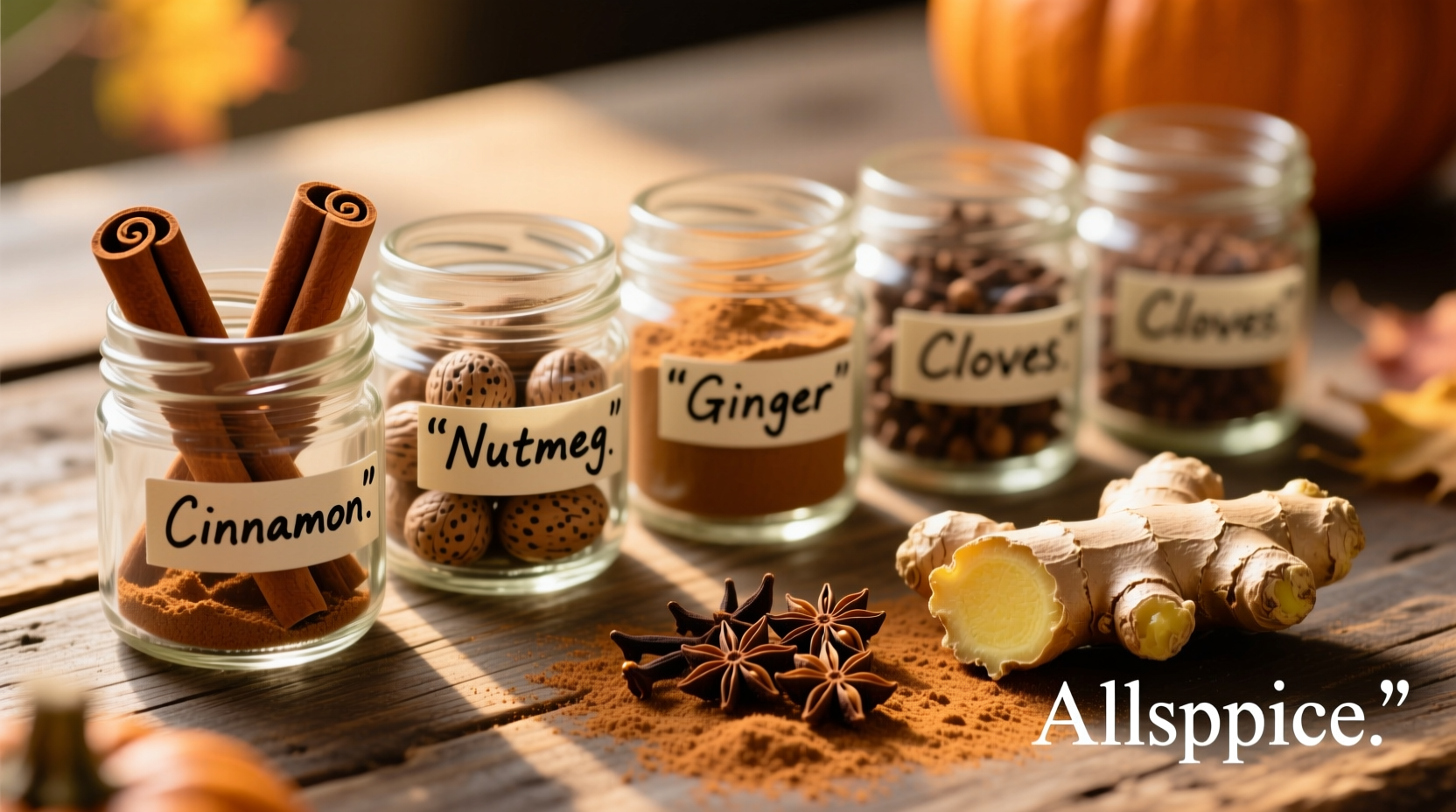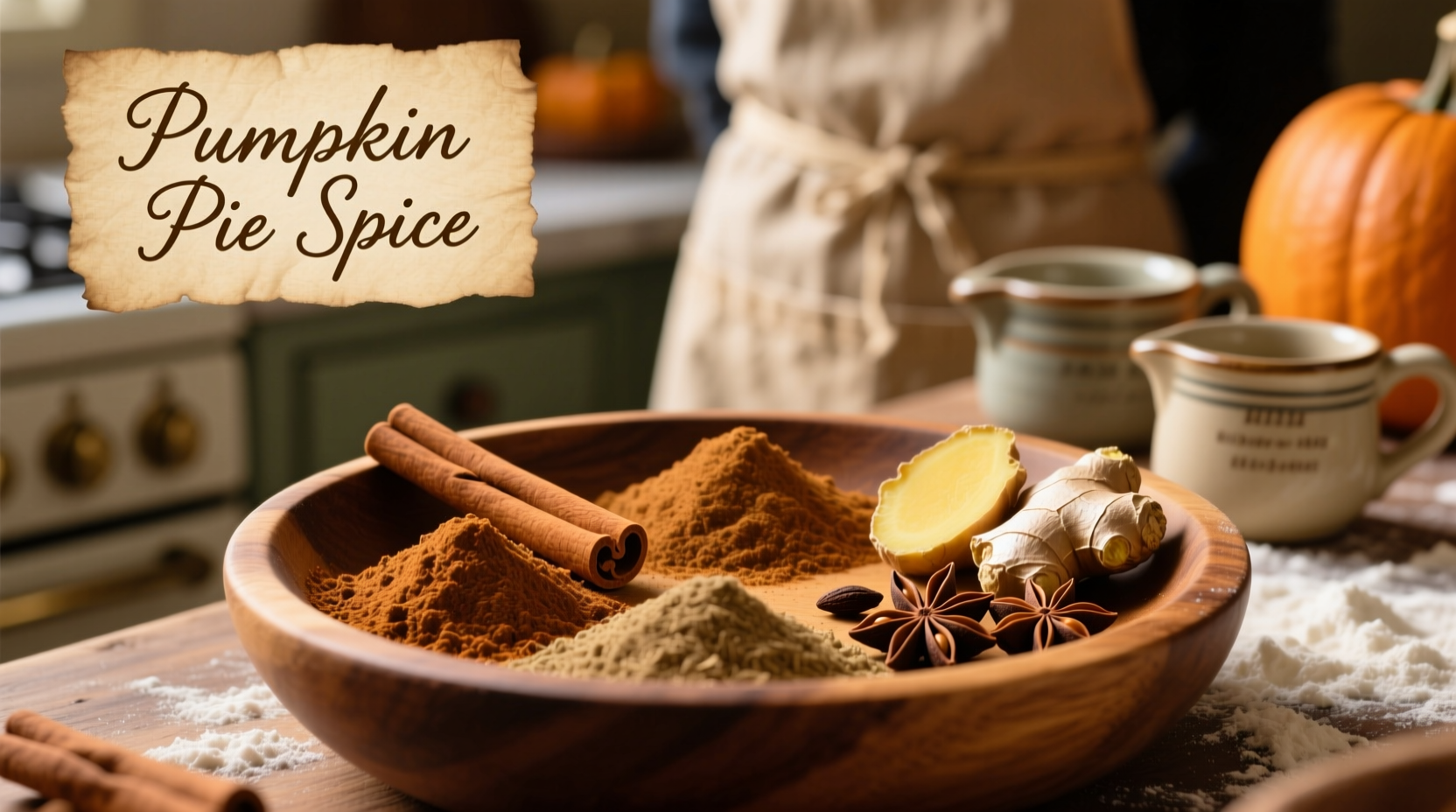Ever wondered what gives pumpkin pie its signature warmth? That distinctive flavor isn't from pumpkin at all—it's the carefully balanced blend we call pumpkin pie spice. As a culinary professional who's analyzed hundreds of spice formulations, I've decoded exactly what goes into this seasonal staple and how to use it like a pro.
The Essential Components Explained
Despite its name, pumpkin pie spice contains no pumpkin. It's a strategic combination of five warming spices that create a synergistic flavor greater than the sum of its parts:
- Cinnamon (60-70% of blend) - Provides the foundational warmth and sweetness
- Ginger (15-20%) - Adds bright, zesty notes with subtle heat
- Nutmeg (5-10%) - Contributes earthy depth and complexity
- Allspice (5-10%) - Brings berry-like notes that mimic cloves and cinnamon combined
- Cloves (3-5%) - Delivers intense aromatic punch in small quantities
| Spice | Flavor Contribution | Chemical Compound | Typical Proportion |
|---|---|---|---|
| Cinnamon | Warm, sweet, woody | Cinnamaldehyde | 4 parts |
| Ginger | Peppery, citrusy, fresh | Gingerol | 2 parts |
| Nutmeg | Earthy, nutty, slightly sweet | Myristicin | 1 part |
| Allspice | Berry-like, clove-cinnamon fusion | Eugenol | 1 part |
| Cloves | Intensely aromatic, pungent | Eugenol | 1 part |
This precise ratio isn't arbitrary. Food science research from the USDA Agricultural Research Service confirms that this specific balance maximizes flavor synergy while preventing any single spice from dominating. The 4:2:1:1:1 proportion has become the industry standard since the 1930s when major spice companies began pre-mixing for consumer convenience.
Why These Five Spices Work Together
The magic of pumpkin pie spice lies in how these components interact. Cinnamon's cinnamaldehyde provides the dominant sweet warmth, while gingerol in ginger adds bright top notes. Nutmeg's myristicin contributes subtle nuttiness that bridges the gap between the sweet cinnamon and pungent cloves. Allspice—which naturally contains eugenol (the same compound in cloves)—creates a flavor bridge that makes the blend taste more complex than if you simply mixed individual spices.

Homemade vs. Commercial Blends
While store-bought pumpkin pie spice offers convenience, making your own provides distinct advantages:
- Freshness control - Pre-mixed spices lose potency faster than whole spices
- Customization - Adjust ratios to match your personal taste preferences
- Quality selection - Choose organic or fair-trade individual spices
For best results, toast whole spices before grinding. The Culinary Institute of America recommends heating whole cinnamon sticks, nutmeg, and cloves in a dry skillet for 2-3 minutes until fragrant, then grinding with pre-ground ginger and allspice.
Practical Usage Guidelines
Understanding proper application prevents common mistakes that ruin baked goods:
- Measurement precision - Use 1.5 teaspoons per standard pie (9-inch)
- When to substitute - Replace with individual spices only when you can control ratios
- Storage limits - Pre-mixed blends lose 30% potency after 6 months (USDA FoodKeeper data)
- Non-pie applications - Works beautifully in oatmeal, lattes, and roasted vegetables
Regional Variations and Substitutions
While the standard blend is consistent across most commercial products, regional variations exist:
- New England style - Higher nutmeg content (2:1:1.5:1:0.5 ratio)
- Midwestern version - Extra ginger for brighter flavor (3:3:1:1:1)
- Vegan adaptation - Same spice blend, different application techniques
If you need a quick substitute, combine 1 teaspoon cinnamon with 1/4 teaspoon each of ginger, nutmeg, and allspice. For authentic results, always add cloves separately as their potency varies significantly by origin.
Common Misconceptions Clarified
Several myths persist about this seasonal staple:
- Myth: Pumpkin pie spice contains pumpkin
Fact: It's purely a spice blend—the name references its primary use - Myth: All brands use identical proportions
Fact: Variations exist—check ingredient lists for ratio clues (longer ingredient lists indicate higher proportions) - Myth: It's only for pie
Fact: Professional chefs use it in savory applications like roasted squash and spiced nuts
Maximizing Flavor in Your Baking
For truly exceptional results, follow these professional techniques:
- Bloom spices in warm milk or cream before adding to recipes
- Add half during mixing and half near the end of baking for layered flavor
- Pair with acid (lemon juice or vinegar) to enhance spice perception
- Store in amber glass jars away from light to preserve volatile compounds
Remember that pumpkin pie spice isn't just for Thanksgiving—its balanced warmth enhances everything from breakfast oats to holiday cookies. By understanding exactly what's in pumpkin pie spice and how these components interact, you'll gain confidence in adjusting recipes and creating your signature seasonal flavors.











 浙公网安备
33010002000092号
浙公网安备
33010002000092号 浙B2-20120091-4
浙B2-20120091-4